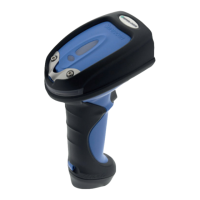IDM-Z1-264-M-2D-J1-BT-N-N0, IDM-Z1-164-M-1D-J1-BT-P-N0
System Structure
2022-12
11
4 System Structure
4.1 Overview
The Bluetooth® handheld scanners and their accessories are presented in the following over-
view. Charging the handheld scanner batteries can take place within the hazardous area using
the Zone 1/21 certified base station and the associated power module. Furthermore, the scan-
ner can be charged in the non-explosion-hazardous area using a base station/charging cradle.
In the following two chapters, the typical usage cases are described in more detail.
4.2 System Structure 1
Charger & Base Station, RS-232 connection to internal VisuNet GXP
barrier
Overview of the complete system structure 1: Bluetooth® handheld scanners IDM-Z1-264-
M-2D-J1-BT-N-N0, IDM-Z1-164-M-1D-J1-BT-P-N0, and base station connected to intrinsically
safe RS-232 Ex i interface VisuNet GXP.
Figure 4.1 System structure 1 - Charger and base station connected to internal GXP "3" Ex i
scanner interface
Description:
The Bluetooth® handheld scanner has been designed with a battery for explosion-hazardous
areas. For proper operation in explosion-hazardous areas, a IDM-Z1-x64-B-J1-BT-N0 base
station, a CBL-IDM-Z1-x61-B-J1* cordset, the DATL-IDM-DB-SXX00-N0 connection cable,
and the RS-232 Ex i interface option of the VisuNet GXP are required.
In this setup the data is directly sent via the base station to the GXP intrinsically safe RS-232 Ex
i interface. As an alternative, the communication between the Bluetooth® handheld scanner
and the GXP can be realized via the built-in Bluetooth® receiver of the VisuNet GXP Display
Unit.
The IDM-Z1-x64-B-J1-BT-N0 base station can be used in both cases as a charging cradle to
charge the scanner in explosion-hazardous areas.

